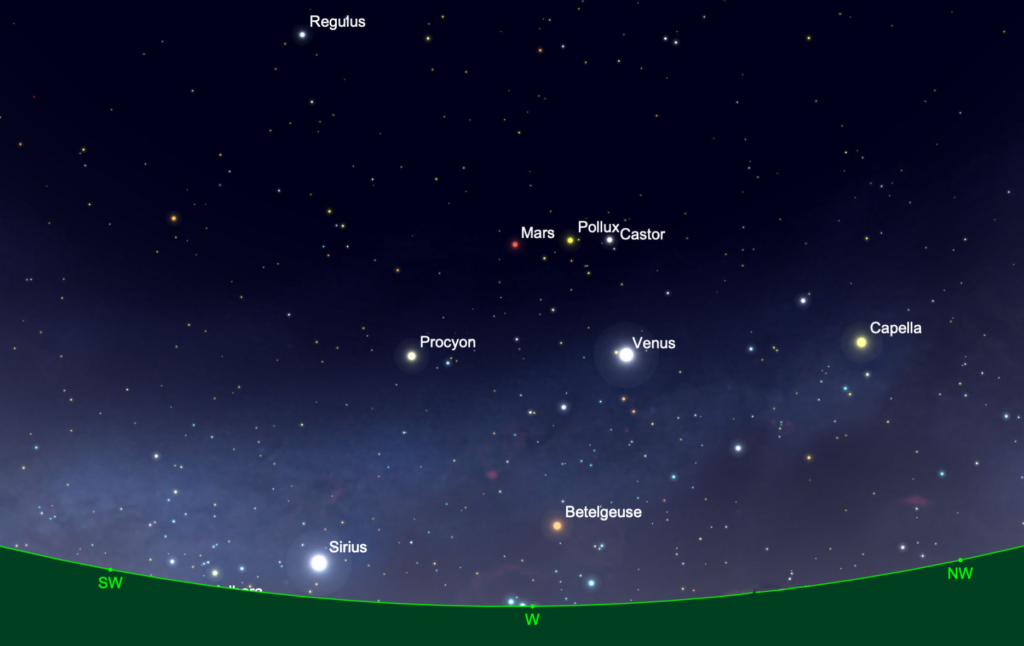Sky Report: May 15 – 21

Venus and Mars continue to delight as they slowly cross the winter Milky Way where you can easily follow their movement night by night. Because they’re in front of the Milky Way there are many stars behind them to chart their progress, so take advantage of this opportunity; generally planets aren’t in front of the Milky Way and there are far fewer background stars.
Venus is brilliant and it’s in front of the stars of Gemini, below the bright stars Castor (on the right) and Pollux (on the left). Its motion is easily noticeable night to night, and on the 21st Venus is equally far (9°) from both stars and they form a wonderful isosceles triangle.
Mars is on the eastern edge of the Milky Way, crossing from Gemini into Cancer on the 16th. All week it’s nearly in line with Castor and Pollux, and it’s precisely in line with them on the 15th when they’re very nearly equally spaced and span 11°. They’re also very nearly equal in brightness, so it’s an unusual configuration. On June 2 Venus will be where Mars is on May 15.
Conjunctions are nice but occultations are far better. A conjunction is when a planet or the moon passes near another planet or a star, and they can be quite pretty as well as a photo opportunity. The closer they are the more interesting the conjunction is. An occultation (from “occult”, to hide) happens when the moon passes in front of (and hides) a planet or a star. (Occultations of one planet by another are exceptionally rare; the last happened in 1818 and the next won’t be until 2065.)
I mention this because the moon will occult Jupiter on the morning of the 17th. It will be difficult to observe, and you’ll need at least binoculars and a low eastern horizon, but if you’re up for a challenge you might try for it. Most of us will look forward to seeing photos the next day.
That Wednesday morning the ultra-slim crescent moon will cover Jupiter at 5:28 a.m. as seen from Kanab (times are similar for nearby areas; for example, as far away as Salt Lake City the time is 5:35). The moon is only 5% illuminated by the sun at an altitude of only 3°, so you’ll need binoculars or a telescope and a lot of luck. The sun is 9° below the horizon so the sky is still in morning twilight. Jupiter disappears behind the sunlit edge of the moon.
Far easier to observe, and again binoculars are highly recommended, is the reappearance of Jupiter from behind the dark edge of the moon at 6:18 a.m. Then the moon is a comfortable 13° high at a bearing of 86° and the sun is precisely on the horizon. Jupiter is preceded by its moons Callisto and then Ganymede at 6:05 and then 6:09 a.m.
(By the way, I made all these calculations with SkySafari — and you can too.)
Stellar Vista Observatory provides portable telescopes and tripod mounted binocular kits on loan for free to residents and visitors in Kane County. Enhance your enjoyment of the night sky! To learn more, request a loan, or attend one of SVO’s free public star parties for 2023, visit https://stellarvistaobservatory.org/ or drop in to the Kane County Office of Tourism.






Comments are closed.